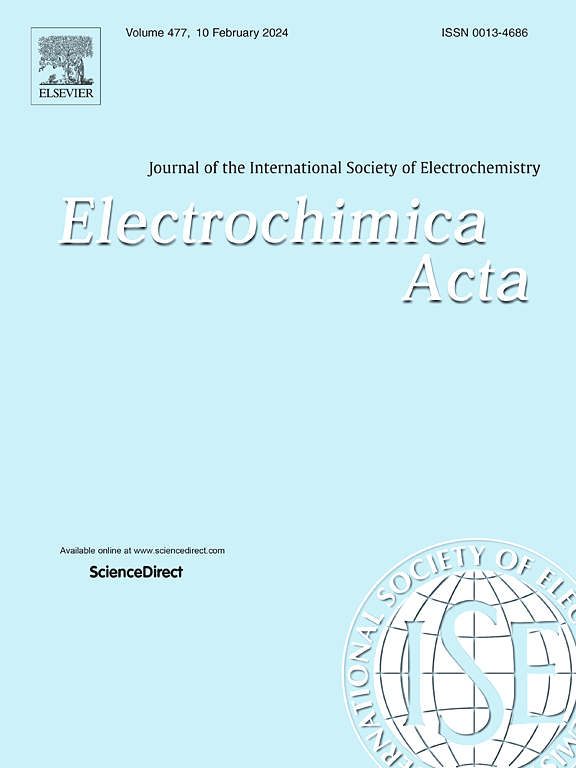Mechanism comparison of heterogeneous and electro-enhanced heterogeneous activation of peroxymonosulfate based on CoFe2O4 nanoparticles for gatifloxacin degradation
IF 5.5
3区 材料科学
Q1 ELECTROCHEMISTRY
引用次数: 0
Abstract
Mechanisms for gatifloxacin (GAT) degradation had been comparative studied for CoFe2O4 nanoparticles (NPs) based heterogeneous catalytic reaction (HCR) and its electrochemical strengthening method (EC-HCR), as peroxymonosulfate (PMS) was used for oxidant. The results indicated that EC could significantly promote the reaction rate of HCR in 10 mins due to the acceleration of ![]() Co/
Co/![]() Fe redox cycle and electron transfer between them, and slow down due to the isolation of catalytic active sites by adsorbate since then. Different from the dominant role of SO4•− in HCR system, •OH played a pivotal role in EC-HCR system due to the generation of high-valent metal species (HVMS), which also given it greater resistance to the coexisted anions and humic acid. Neither increasing the dosage of CoFe2O4 NPs nor PMS could achieve efficient mineralization of GAT (33.7 % to 41.6 %) in HCR system, while the mineralization efficiencies of GAT were reached 80.4 % and 86.4 % as the mass ratio of PMS to CoFe2O4 were 3:1 and 5:1, respectively. Although the similar GAT degradation pathways were observed in HCR and EC-HCR system attributed to the similar active species composition, the difference in dominant active species caused a very different detoxification effect. The harmful degradation products that presence in HCR system could be degraded in EC-HCR system, with the same CoFe2O4 NPs and PMS dosage. Therefore, EC-HCR can be flexibly applied to the treatment of wastewater that containing antibiotics, either detoxification or complete mineralization depends on the chemical inputs.
Fe redox cycle and electron transfer between them, and slow down due to the isolation of catalytic active sites by adsorbate since then. Different from the dominant role of SO4•− in HCR system, •OH played a pivotal role in EC-HCR system due to the generation of high-valent metal species (HVMS), which also given it greater resistance to the coexisted anions and humic acid. Neither increasing the dosage of CoFe2O4 NPs nor PMS could achieve efficient mineralization of GAT (33.7 % to 41.6 %) in HCR system, while the mineralization efficiencies of GAT were reached 80.4 % and 86.4 % as the mass ratio of PMS to CoFe2O4 were 3:1 and 5:1, respectively. Although the similar GAT degradation pathways were observed in HCR and EC-HCR system attributed to the similar active species composition, the difference in dominant active species caused a very different detoxification effect. The harmful degradation products that presence in HCR system could be degraded in EC-HCR system, with the same CoFe2O4 NPs and PMS dosage. Therefore, EC-HCR can be flexibly applied to the treatment of wastewater that containing antibiotics, either detoxification or complete mineralization depends on the chemical inputs.
求助全文
约1分钟内获得全文
求助全文
来源期刊

Electrochimica Acta
工程技术-电化学
CiteScore
11.30
自引率
6.10%
发文量
1634
审稿时长
41 days
期刊介绍:
Electrochimica Acta is an international journal. It is intended for the publication of both original work and reviews in the field of electrochemistry. Electrochemistry should be interpreted to mean any of the research fields covered by the Divisions of the International Society of Electrochemistry listed below, as well as emerging scientific domains covered by ISE New Topics Committee.
 求助内容:
求助内容: 应助结果提醒方式:
应助结果提醒方式:


